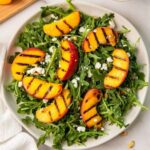Unleash your inner chef with vibrant, nutritious, and incredibly delicious flexitarian power bowls! This guide dives deep into the art of creating customizable bowls packed with protein, fiber, and a burst of fresh flavors. Whether you’re a seasoned foodie or a kitchen novice, you’ll discover exciting recipe variations, step-by-step instructions, and expert tips to craft power bowls that are as visually stunning as they are satisfying.

We explore a diverse range of protein sources, from hearty lentils and chickpeas to the creamy richness of tofu and the satisfying chew of grilled halloumi. Learn how to select the perfect vegetables, craft mouthwatering dressings, and master the art of presentation, transforming your power bowls into edible masterpieces. This isn’t just about healthy eating; it’s about creating a culinary experience that nourishes your body and soul.
Step-by-Step Guide
Creating a vibrant and delicious flexitarian power bowl is easier than you think! This guide will walk you through the process of crafting a signature bowl, brimming with fresh flavors and textures. We’ll focus on building a balanced meal with a satisfying blend of protein, grains, vegetables, and healthy fats. Each step is designed to maximize both taste and visual appeal.
Roasted Sweet Potato and Chickpea Power Bowl Preparation
This recipe showcases the versatility of flexitarian eating, easily adaptable to your preferences and dietary needs. The roasting process enhances the natural sweetness of the sweet potato and adds a delightful crunch to the chickpeas.
- Preparing the Sweet Potato: Begin by preheating your oven to 400°F (200°C). Wash and peel a medium-sized sweet potato, then cube it into approximately 1-inch pieces. Toss the sweet potato cubes with 1 tablespoon of olive oil, a pinch of salt, and a generous sprinkle of paprika. Imagine the vibrant orange cubes glistening with oil, ready to transform in the oven. [Image: A bowl of cubed sweet potatoes tossed with olive oil and paprika, showing their bright orange color.]
- Roasting the Sweet Potato: Spread the seasoned sweet potato cubes in a single layer on a baking sheet. Roast for 20-25 minutes, or until tender and slightly caramelized at the edges. Picture the sweet potatoes softening and developing a beautiful, slightly browned exterior, their aroma filling the kitchen. [Image: A baking sheet with roasted sweet potatoes, showing their caramelized edges and soft interior.]
- Preparing the Chickpeas: While the sweet potatoes are roasting, drain and rinse one can (15 ounces) of chickpeas. Pat them dry with a paper towel to remove excess moisture. In a separate bowl, toss the chickpeas with 1 tablespoon of olive oil, ½ teaspoon of cumin, and a pinch of salt. Visualize the chickpeas, plump and ready to absorb the spices, their creamy texture promising a delightful contrast. [Image: A bowl of chickpeas tossed with olive oil, cumin, and salt, highlighting their creamy texture.]
- Roasting the Chickpeas: Add the seasoned chickpeas to the baking sheet with the sweet potatoes during the last 10-15 minutes of roasting time. This ensures they become crispy and slightly browned without overcooking. Imagine the chickpeas crisping up beautifully, their edges turning golden brown, and the cumin aroma mingling with the sweet potatoes. [Image: The baking sheet now containing both roasted sweet potatoes and chickpeas, showcasing their different textures and colors.]
- Preparing the Quinoa: While the vegetables roast, prepare the quinoa. Rinse ½ cup of quinoa under cold water. Combine the rinsed quinoa with 1 cup of water in a small saucepan. Bring to a boil, then reduce heat to low, cover, and simmer for 15 minutes, or until all the water is absorbed. Fluff with a fork. The fluffy, pearly grains of cooked quinoa are a perfect base for the power bowl, offering a light yet satisfying texture. [Image: A bowl of fluffy cooked quinoa, showcasing its pearly white color and light texture.]
- Assembling the Power Bowl: Once all the components are cooked, it’s time to assemble your power bowl. Start with a base of cooked quinoa. Next, add a generous portion of the roasted sweet potatoes and chickpeas. For added freshness and flavor, top with a handful of baby spinach, a sprinkle of toasted pumpkin seeds, and a dollop of your favorite dressing (e.g., tahini dressing, lemon vinaigrette). The final bowl is a vibrant explosion of colors and textures, a feast for the eyes and the palate. [Image: The completed power bowl, showcasing the layers of quinoa, roasted sweet potatoes, chickpeas, spinach, pumpkin seeds, and dressing. The image should emphasize the vibrant colors and textures.]
From the simple elegance of a perfectly balanced quinoa bowl to the vibrant explosion of a tofu and vegetable masterpiece, the possibilities for creating your own signature flexitarian power bowls are endless. This guide has equipped you with the knowledge and inspiration to embark on a culinary journey filled with flavor, creativity, and healthy living. So, gather your ingredients, unleash your creativity, and prepare to savor the delicious results – power bowls that are as unique and individual as you are.
Quick FAQs
Can I meal prep these power bowls?
Absolutely! Many components can be prepped in advance (cooked grains, chopped veggies, dressings). Assemble just before serving for optimal freshness and texture.
What if I don’t like one of the suggested ingredients?
The beauty of power bowls lies in their customizability. Feel free to swap out ingredients based on your preferences and dietary needs. The recipe suggestions serve as a starting point for your culinary creativity.
How long do these power bowls last in the refrigerator?
Properly stored in an airtight container, flexitarian power bowls generally last for 3-4 days in the refrigerator. However, it’s best to consume them within 2 days for optimal freshness.
Are these recipes suitable for freezing?
Some components freeze well (cooked grains, roasted vegetables), but it’s best to avoid freezing dressings and delicate greens. Assemble frozen components into bowls after thawing and add fresh elements just before serving.


